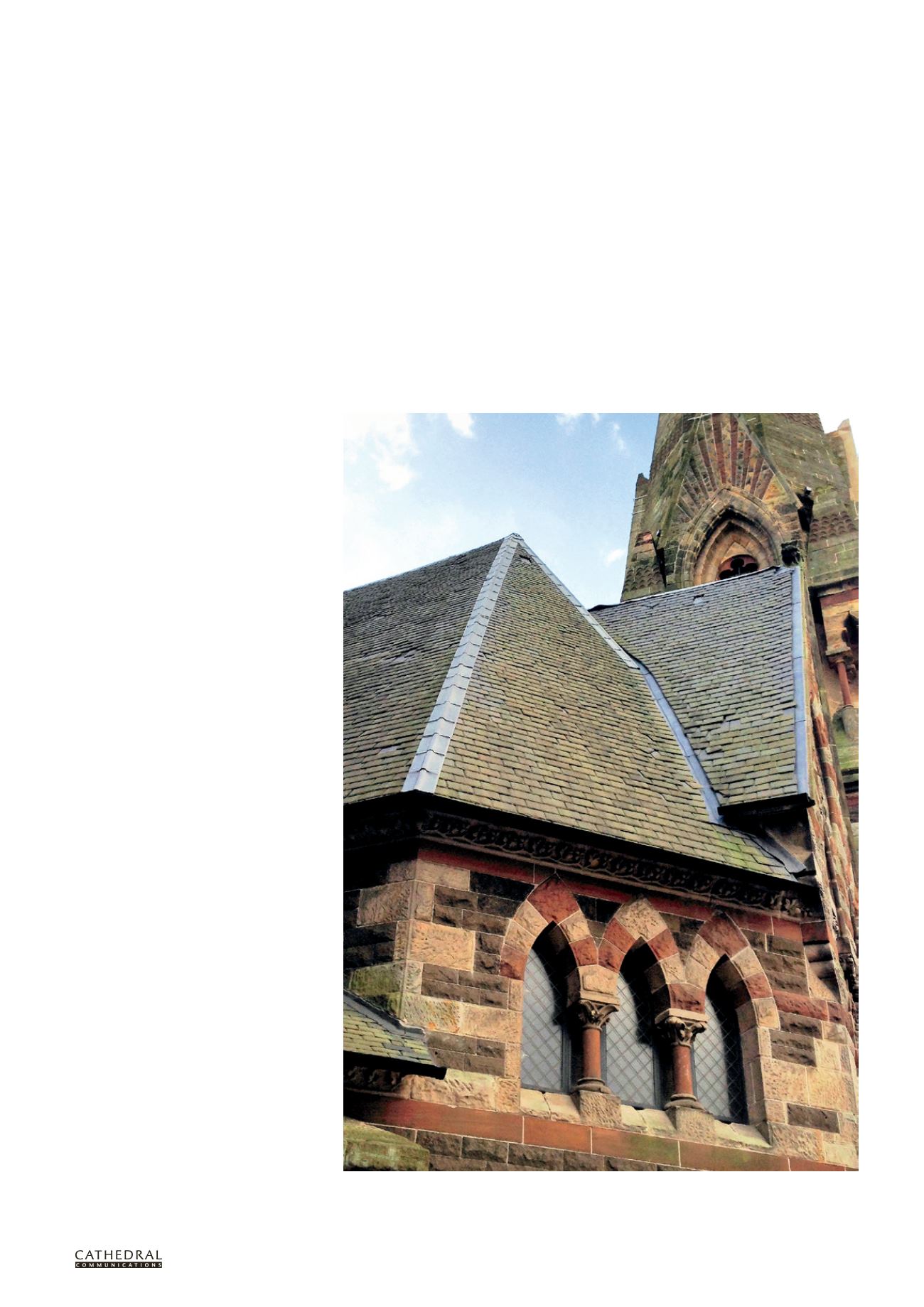

BCD SPECIAL REPORT ON
HISTORIC CHURCHES
24
TH ANNUAL EDITION
27
BATTLING THE
ELEMENTS
Church roof repairs in the west of Scotland
Rebecca Cadie
W
ITH THE help of grants
from the Listed Places of
Worship Roof Repair Fund,
the Heritage Lottery Fund and the VAT
recovery scheme, the last few years have
been extremely busy with roof repairs
to a good number of churches in rural
and coastal locations for us in the west
of Scotland. Weather conditions for the
Inverclyde and Ayrshire coasts of the
River Clyde, Argyll and the Western Isles
have a reputation for being a challenge,
with high rainfall combined with
prevailing south-westerly winds often
resulting in prolonged periods of driving
rain. It has been well reported that
there has been as much as a 50 per cent
increase in annual precipitation in the
last 50 years and an increased frequency
of gales and storms as a result of climate
change. Many of the churches are now
150 to 200 years old and are reaching a
stage of decay where roofing materials
can no longer cope with the persistent
wet climate. For these churches, regular
maintenance and patching up repairs
are no longer enough; comprehensive
conservation work and re-roofing is often
the only option.
Much of ARPL Architects’ work is
involved with Scottish Episcopal churches,
which often have simple Victorian Gothic
style steeply pitched slate roofs on timber
sarking boards and trussed or tied rafter
roofs that are exposed to the interior.
Other typical features include raised
gables with skews (gable parapets) and
a bell-cote or tower intersecting with
the main roof. Many of these churches
are located on the seafront or a raised
hillside and have been experiencing
some extreme winter storms, which are
becoming noticeably more frequent.
These storms lift and disturb slates, pull
up lead flashings, and in a few situations
have broken and blown off stone finials.
Storm damage to the roof of Trinity Church in Irvine, North Ayrshire due to poor slate fixings and the use of
lightweight zinc ridges (All photos: Rebecca Cadie)


















